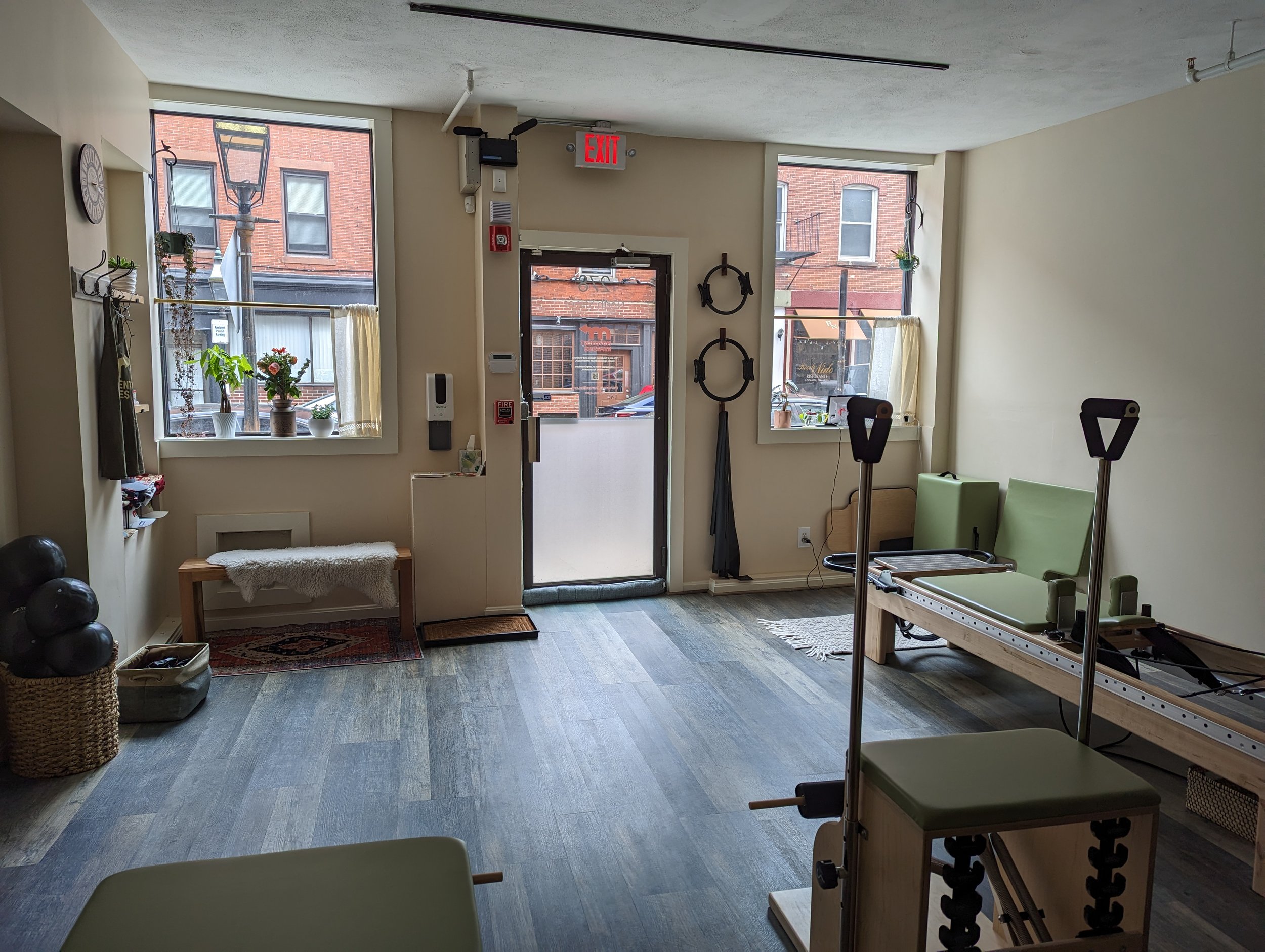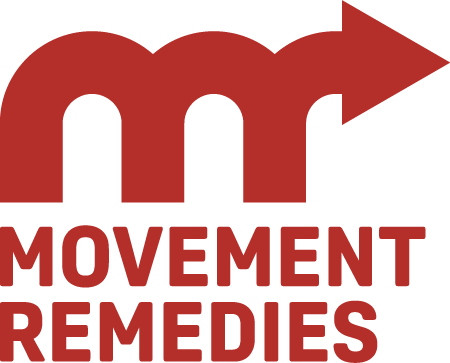
Pilates and Healing, as Told by a Trauma Survivor
I was stunned. While I know Pilates to have been a powerful movement therapy for so many, I never expected to see it figuring so prominently in a popular book of psychology and trauma recovery. To me this encapsulates everything I wanted Movement Remedies to be when I launched the business: not just a place where the exercises build strength and confidence but also where the shared experience of chronic pain and all the feelings that come with that would create a supportive community that came with its own distinct benefits.

Movement is What You Were Meant For
I love “You’re Meant to Move” for the same reasons I initially resisted it: its meaning can be interpreted differently depending on the person and their perspective. To be “meant” for something means you are perfectly suited to it, maybe even destined. But when your mother says, “you’re meant to close the lid when you’re done with the toilet,” that’s a bit more of a directive statement as in “you’re supposed to” do something. If I say that we are meant for each other it means that I believe we are soulmates. I think all of these meanings and more are relevant for the many messages in this book.

How Stress Resilient is Your Team?
I would argue that a challenge you CAN solve, though, is your own awareness of how stress affects you. And before you say, “it isn’t affecting me:” it is even if you don’t notice it. Our species has evolved to process a particular threshold of information and human connections that has been greatly surpassed in the past century, with exponential growth in particular since the social media explosion of recent years. So whether stress has entered your consciousness today or whether your nervous system has found some way to compartmentalize it until some future time, I guarantee you that you are affected by stress.

My First Podcast Experience
The story of how I got on the Bold Like Her podcast is really a testament to the power of networking. A good friend and colleague of mine named Runa ended up moving to the Boston area a few years ago from Hartford, CT, where we had first met when I was in health management consulting. When I first made the jump out of full-time corporate life, Runa came to visit me to catch up and get a taste of my new career in Pilates. Fast forward a few years and Runa puts me in touch with her friend and colleague, Tracy. Not only is Tracy also an aspiring entrepreneur—a Registered Dietician who is setting up her own unique approach to nutrition coaching services—but she also lives about 3 blocks from me in the same neighborhood.

I Can’t Believe it Either: I am Writing a Book!
The steps I have taken myself and my chronic pain clients through….maybe they are not even steps, I think I would actually call them development points…these experiences are accessible to everyone. This journey doesn’t require special equipment (though it might provide more options along the way) and it doesn’t necessitate a movement teacher (though it might speed up the process). All you really need is a compass and a few key milestones, much like the path defined in Paulo Coelho’s The Pilgrimage. My hope is that through a book I can expand my impact by explaining my method in a way that can be repeated by others.

Change Your Movement Mindset to Exploration
We often say that movement is medicine. But physical activity might not feel very therapeutic if in the past it has been associated with pain. In order to get back to a place of confidence and comfort with movement, we have to first change our mindset to one of exploration. This is an essential part of the Movement Remedies approach when working with chronic pain clients who want to get active again but don't know where to start.

Does Dieting Increase the Risk of Chronic Pain?
Even if you manage to free yourself from the grip of diet culture, the time spent pursuing a smaller body will likely have resulted in complete neglect of your physical sensations for so long that it becomes a conditioned behavior. Many people with long term dysregulated relationships with food will have completely compartmentalized their emotional selves from their physical selves, such that they are virtually numb.

6 Common Challenges We See with Chronic Pain
Though I had been experiencing low back pain on-and-off for decades, it wasn’t until I started researching pain in order to help my Pilates clients that I actually began to understand the basic mechanisms behind painful sensations. In particular, while I assumed that ongoing pain symptoms meant I was reinjuring or irritating my disc herniation over and over again, pain education taught me that acute pain becomes chronic for many people long after the tissues have actually healed. The oft-repeated “hurt doesn’t equal harm” saying was definitely a mind-opener for me. Research has shown that combining pain education with movement interventions, like physical therapy, can significantly improve pain and disability outcomes.

Shut Down Your Inner Movement Critic
We have done ourselves a real disservice by labeling certain activities as exercise and others, as a matter of consequence, “not exercise.” As a result, I find most people have a very narrow understanding of what constitutes a sufficiently fitness-oriented activity to “count.”
We assign value to certain exercises as “better” or maybe “more rigorous” than others. At its core, what people are really talking about is trying to pay for their food consumption with whatever physical activity generates the greatest calorie deficit. Why “pay” for your dessert with a gentle walk when you can throw a great big high intensity interval training session at the problem and get more calorie burn in less time.
